Louise O’Hara is a professional mixed media artist. Her work explores the richness of light, the colour and the texture that she sees around. Often focusing on rugged northern landscapes with brooding skies and lighter coastal scenes that are based on the memory of a place or a childhood holiday.
Each piece Louise produces is usually made from a collection of places which she has visited both as a child and more recently as an adult. She says:
I don’t want the viewer to be anchored to one place but instead, reminisce about many memories and experiences they have had themselves.
My landscapes are full of rich layers incorporating elements of historical textiles, fabrics, buttons, paper and text giving a sense of human belonging and the passing of ages, giving a quality of timelessness and celebrating the lives of those individuals now passed.
Through my landscapes I aim to capture the weathered surface, so much a part of our landscape, crawling mists, angled rain, stiff westerly breezes and pale summer sunshine.
In this interview, Louise tells us what gets her mind ticking and creative juices flowing. We learn about the materials she favours and how collecting and reusing them are central to her artistic vision.
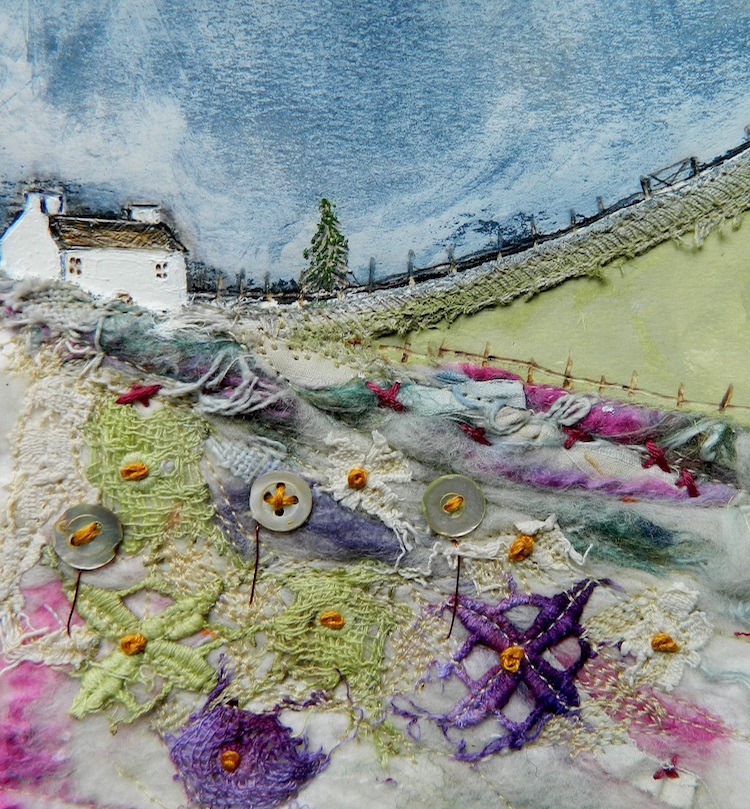
Make do and mend
TextileArtist.org: What initially attracted you to textiles as a medium?
Louise O’Hara: My initial interest in textiles begin in Art school and it really took off in my first year of a HND in Design Crafts when I was taught that the loosest form of embroidery was a piece of rope wrapped around a tree.
It was at this point that I got interested in the conceptual side of working in fabrics. Research also played a major part of my art education where I became fascinated with the work of artists such as Maxine Bristow, Shelly Goldsmith, Manon Gignoux and Hussein Chalayan, who all produced work, not for its aesthetic qualities but with a deeper lying conceptual meaning, which resonates throughout all their work.
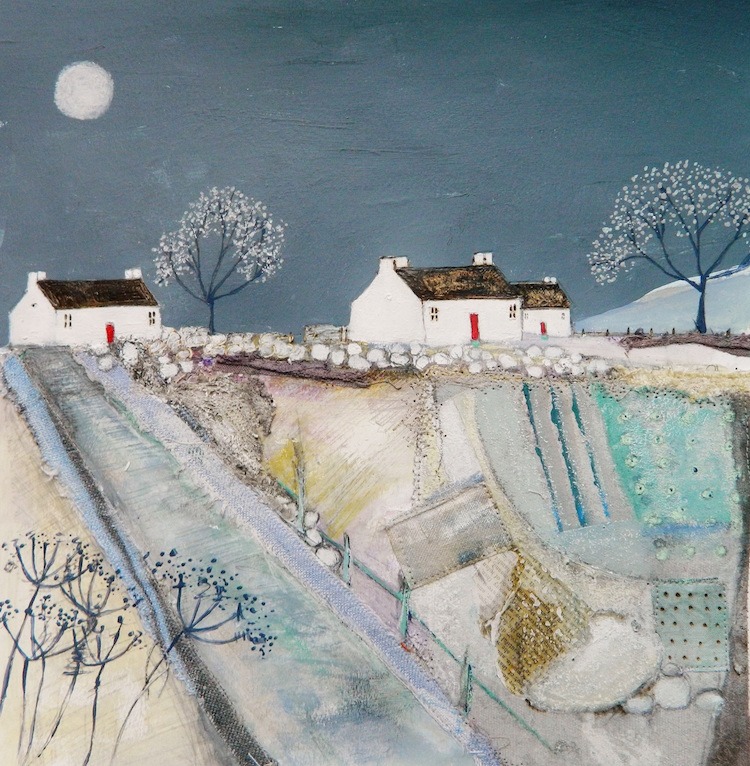
And, more specifically, how was your imagination captured by stitch?
I became fascinated with the wartime notion of make do and mend which intended to help women to get the last possible ounce of wear out of all their and their families clothes, and I loved the camaraderie which the sewing circles at that time offered them.
I became so obsessed with this notion of reduce, reuse and recycle that I started to source and collect my own household domestic fabrics, fabrics that had, had a previous life and that had outlived their purpose as they had become threadbare and worn, it was this aged feel that really attracted me to them and the fact that they had had a previous life with stories to tell.
I like the idea that someone has taken the time to make something by hand, something which is personal to them. I imagine the conversations whilst they were being made, and I imagine the maker listening to their children reading a bedtime story, or listening to a story on the radio, and I feel all these memories and stories become engrained and captured in each piece.
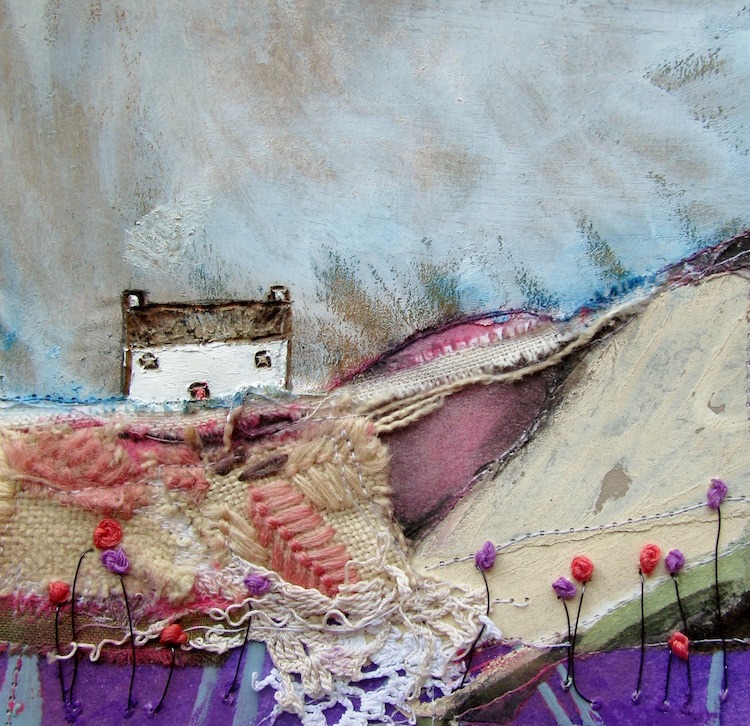
I always take the opportunity to visit secondhand and antique shops whenever I can. I look for things that evoke memories within me and things which have had a previous existence. I want to rejuvenate them and breathe new life into them so they can continue in a cycle, things like crocheted mats, throws, quilts, in fact, anything that is domestic, found in the home and which has been made by hand.
I am saddened by the current embrace of disposability, with things made to be used once and thrown into the landfill, I relish the idea of things that are patched and mended and made stronger so that they can live on. I am always overwhelmed when people send me vintage items, ephemera and family heirlooms which they no longer have a purpose for as they want to allow their memories to live on in my work.
I use hand stitch and machine stitch not only to anchor layers but as a tool for drawing.
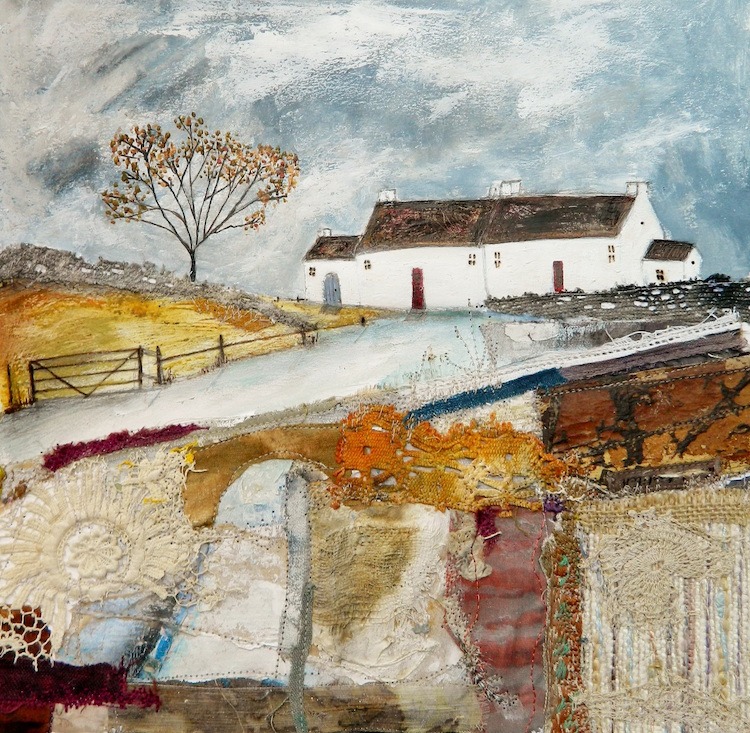
Sharing a passion
What was your route to becoming an artist?
After completing art school I embarked upon a degree in fashion and textiles at Liverpool John Moores University. I loved it, but afterwards, I was totally burned out and decided I needed to step away. I worked in office-based jobs for a few years, but I missed the creative process so much.
In 2004 I completed an M.A. in Fashion & Textiles at Manchester Metropolitan University, and the following year I completed a PGCE. I got a teaching job straight away and I spent 12 wonderful years teaching art at different levels, up to an applied arts foundation degree. I loved working with adults who shared the same passion for art and making as I do.
In 2006 I became a mum and I went on to have my second child in 2008, after a few years of just being a mum I decided I could not turn my back on the creative lifestyle anymore and I wanted to do something that would make my children and family proud. So In 2012, I started to go under the name of DrawntoStitch. I started a Facebook page and built a website in order to promote myself and my work.
In 2014 I was unable to carry on lecturing as I was getting increasingly busier with my own practice. It was with a heavy heart that I decided to hand my notice in and become a full-time professional artist. I took the decision to change my trading name from DrawntoStitch to Louise O’Hara Art, I noticed the galleries never used DTS and always preferred to use my actual name, so to save any confusion I felt that this was the best thing to do.
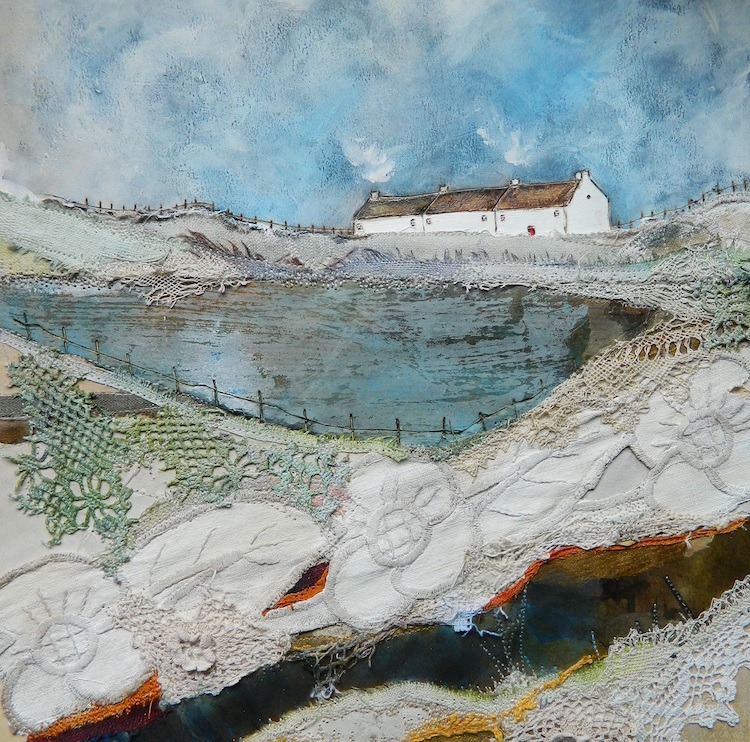
A cycle of layer building
Tell us a bit about your chosen techniques
I never plan work, I have a very loose idea in my head and I like to be dictated to by the materials which I use, I start usually with a heavy weight paper like Fabrianno Artistico and I draw a loose landscape, drawing upon sketches and photographs for inspiration.
I then start to build layers using acrylic paint, graphite, acrylic ink and oil pastel, I then begin to incorporate fabrics, loosely glueing them down and then anchoring them in place with my sewing machine. This process then starts again, with the acrylic paint, ink, graphite. It’s a continues cycle of layer building. Once I am happy I will start to use the sewing machine and soldering iron to draw in the smaller details.
I also like to work on a number of pieces at once, this allows me the time to reflect and develop the work. If I am not happy with a piece I will always put it to one side and return and rework it when the time is right. I am never afraid to paint over a complete piece or tear work up and start again if that’s what feels right. I like the fact that this offers an immediate layer and a trace of something already having existed.
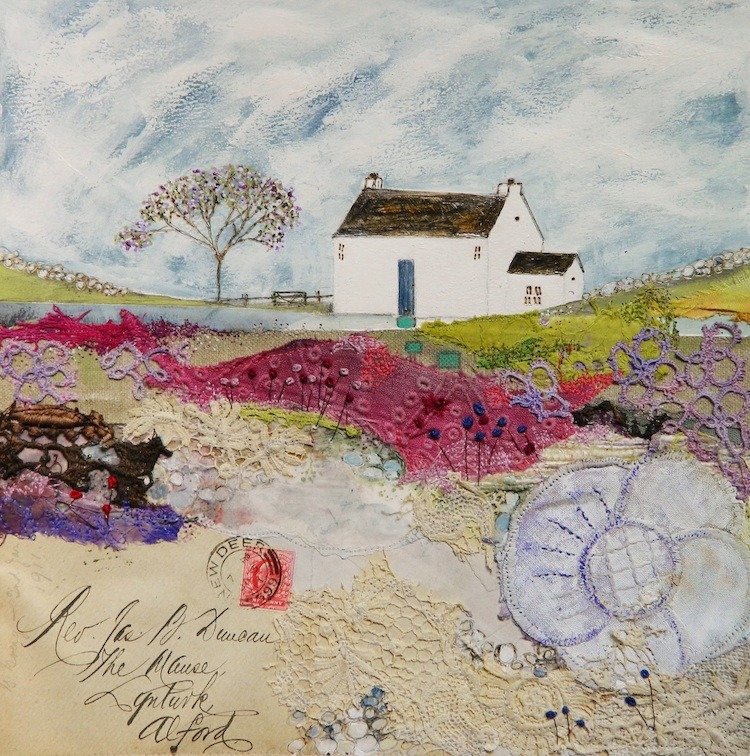
How do you use these techniques in conjunction with embroidery?
Within my work I use a combination of hand painted and dyed layered surfaces to create intricate collages, I like to combine rich layered surfaces of fabrics, paper, machine and hand stitch as well as vintage and discarded items which I combine to create complex and intricate mixed media pieces, I use stitch to anchor, create texture and a tactile surface and also as a tool for drawing.
How would you describe your work and where do you think it fits within the sphere of contemporary art?
I describe my work as Mixed Media, my work sits somewhere between contemporary craft and art.
Do you use a sketchbook? If not, what preparatory work do you do?
I use a sketchbook and journal purely to write rough ideas down, doodle, to collect my thoughts, collect references, make lists and as a tool to remind me whilst I am away from my studio as my memory these days is dreadful!
I never share my sketchbooks or journals as I see them as a personal extension of my inner thoughts. I always take a camera wherever I go and document landscapes, buildings, tactile surfaces and anything I feel is relevant to incorporate into my work.
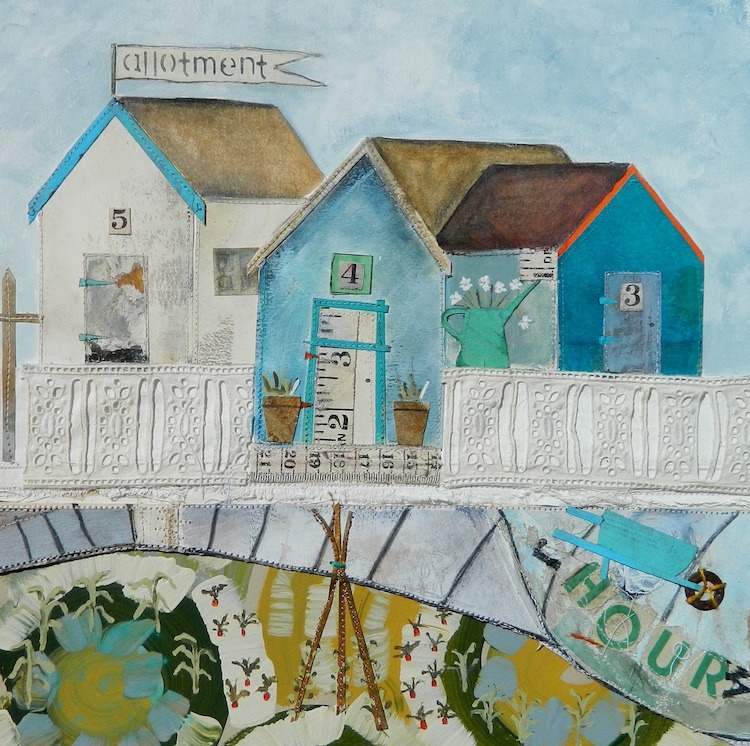
Tell us about your process from conception to conclusion.
In preparation, I spend days dyeing my salvaged fabrics using a combination of inks, procion dyes, natural dyes and acrylic paints.
I also take the time to Mark make with wax, ink, graphite and mixed media working in a combination of colourways; these are then stored and ready to use when the time is right.
Organised chaos
What environment do you like to work in?
I like to work alone in my studio at home, well, with acceptance of the company of my new rescue Jack Russell Patch, who has found a place under my desk or on my knee, I have to have the radio on, I cannot work in silence.
My studio is based at my home, cobweb cottage, which is situated in a small village called Davenham located in the heart of Cheshire. My studio is filled to the rafters with items which are often overlooked in everyday life, items that most people may take for granted.
I love the fact that the items I collect offer a trace of the past and that they have a history of their own with stories to tell. I have jars of buttons, rusty washers, threads, papers, vintage fabrics, etc…all waiting to start life again and be incorporated into a piece when the time is right.
I describe my studio as organised chaos.
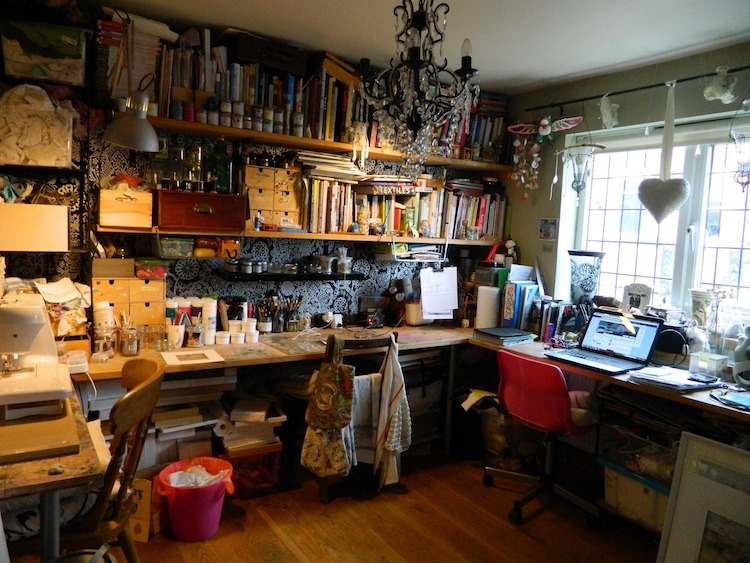
Laden with memories
What currently inspires you?
I stumbled across wabi-sabi and the ethos of beauty in imperfection whilst studying on a Fashion & Textiles Masters Degree at Manchester University back in 2004. This really captures my inspirations and the work which I produce.
I am influenced by tactile, aged surfaces like peeling paint on walls and fabrics which are threadbare but laden with memories and stories to tell. I like to photograph and record elements of trace, things that indicate a remnant or mark of something previous, maybe something that will evoke a memory in the viewer, and this also resonates through with the inclusion of images from my childhood memories. Many of the mixed-media canvases I create are reflections of remembered landscapes and places visited whilst growing up.
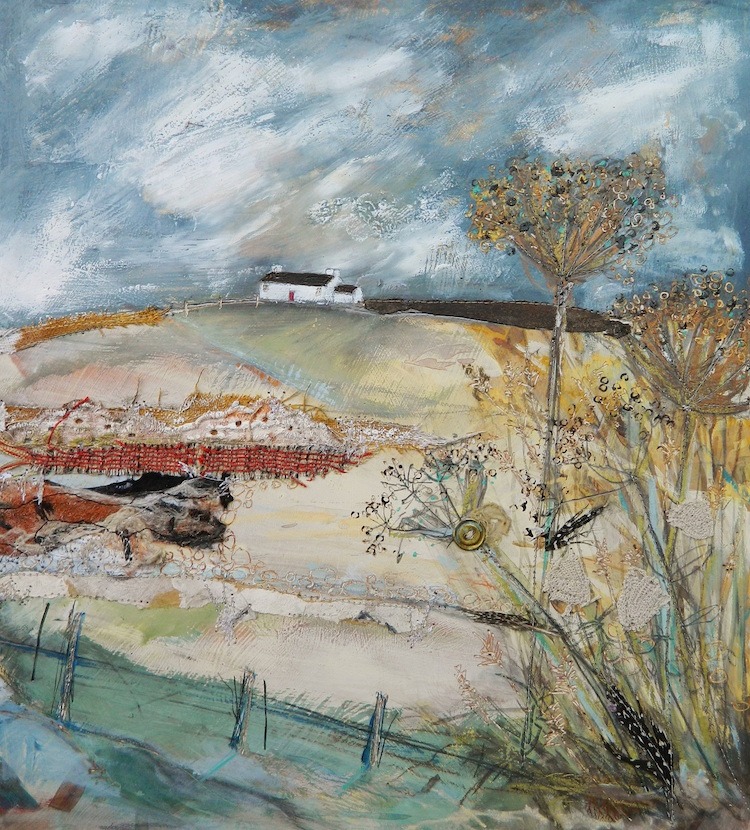
Who have been your major influences and why?
I grew up entranced by the work of both Joseph Cornell and Kurt Schwitters, I was always moved by the way they brought new life to unappreciated objects: bits of typeset, pebbles, driftwood, fragments of objects that were once beautiful, images from magazines, all combined so they became much more than they could ever have been separately.
What advice would you give to an aspiring textile artist?
Don’t spend too long thinking about it. Just do it. What do you have to loose? And importantly…collect, source, keep, you never know when something will come in handy!
Don’t get hung up when you get rejected by galleries, this is not a reflection on the quality of your work, it could be that they have a limit to the artists which they represent or you work just not fit within the style of that particular gallery….but NEVER GIVE UP!
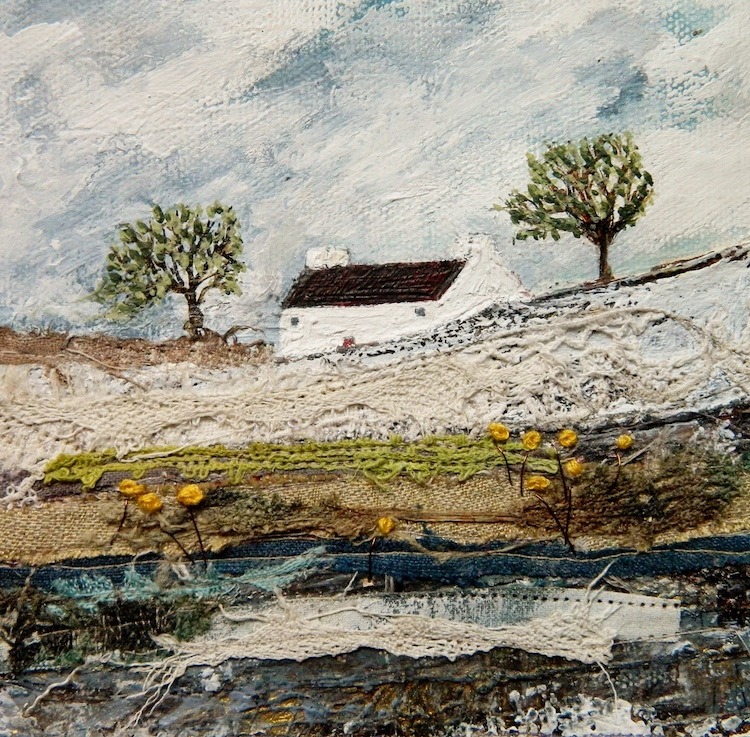
Can you recommend 3 or 4 books for textile artists?
- Textiles – Mary Schoeser – Thames & Hudson
- Slow Stitch – Claire Wellesley-Smith – Batsford
- Connected Cloth – Cas Holmes & Anne Kelly – Batsford
- Eco Colour – India Flint – Murdoch Books
What other resources do you use? Blogs, websites, magazines etc.
I do love Selvedge Magazine and of course Textile.org and I am constantly looking at blogs and websites, like Instagram, Facebook, Pinterest is a real addiction of mine…when time constraints allow.
What piece of equipment or tool could you not live without?
My favourite materials to work with are those which lend themselves to being versatile enough to form layers, for example acrylic paints, acrylic inks, graphite, oil pastels I would say all these are all quick drying as I am not the most patient artist!
I could not live without my Sewing machine or my soldering iron.
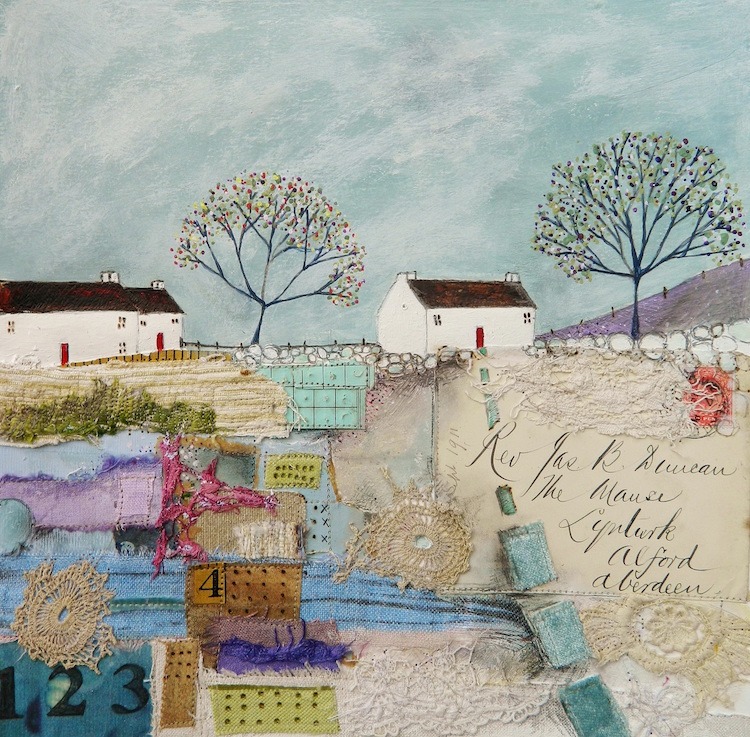
Do you give talks or run workshops or classes? If so where can readers find information about these?
I don’t currently run workshops or classes as I find it hard enough to keep the balls juggling in the air with trying to run a full time business and family, but you never know one day I may have the luxury of time on my side!
How do you go about choosing where to show your work?
Initially I used to send work out to every gallery that emailed me, however I soon realised that it was not good to spread yourself to thin and now I am much more considerate with the galleries who approach me and the galleries which I approach.
I think it is important when choosing where to show your work to approach galleries where your work will sit within their style and it’s important to get a good working relationship with the galleries which you show with after all they are the window to your work and they represent you as a person and an artist.
Where can readers see your work this year?
Wills Art Warehouse – Richmond, London- Permanent artist
The Golden Hare Gallery – Ampthill, Bedfordshire
The Whitehouse Gallery – Kirkcudbright – Winter show 2017
The Honest Thistle – Pitlochry, Scotland
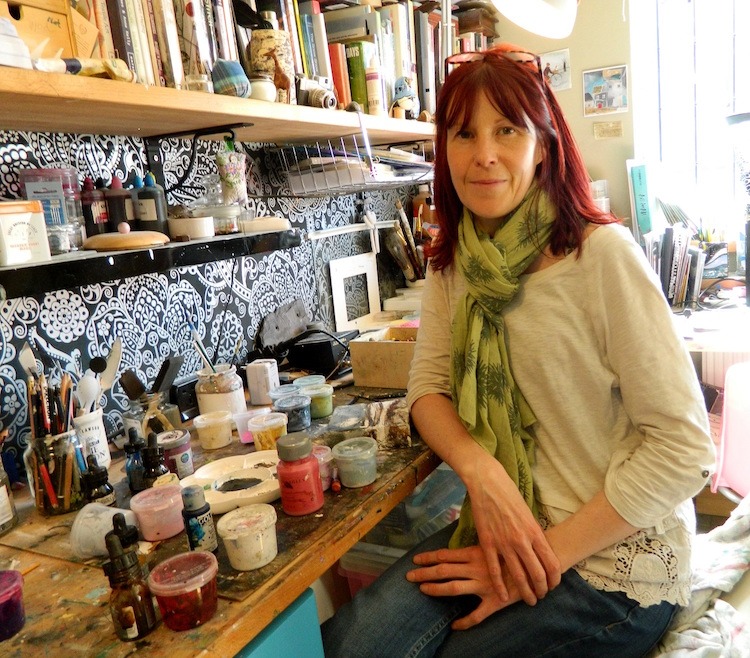
For more information visit: www.louiseohara.co.uk, email Louise at ku.oc.arahoesiuol@tra.
Also Facebook, Pinterest and Instagram
If you’ve enjoyed this interview why not share it with your friends on Facebook using the button below?
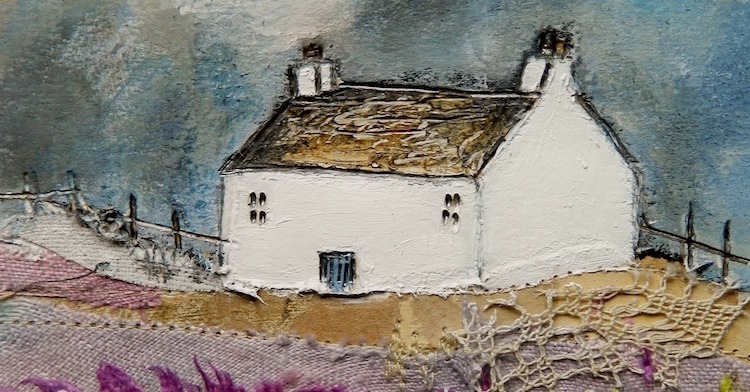

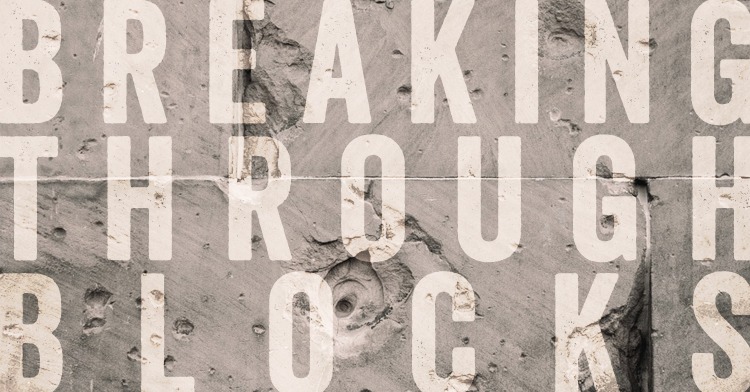
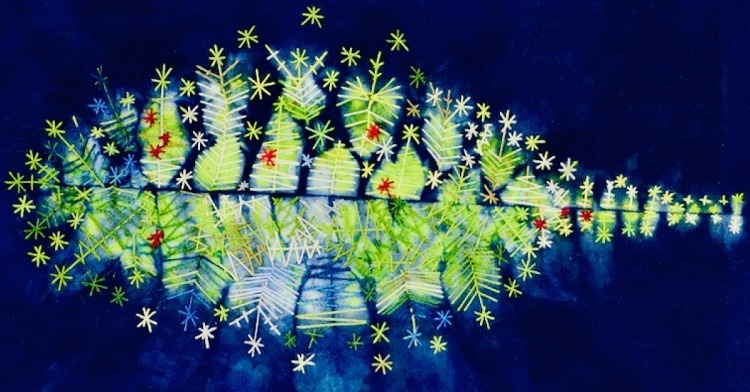
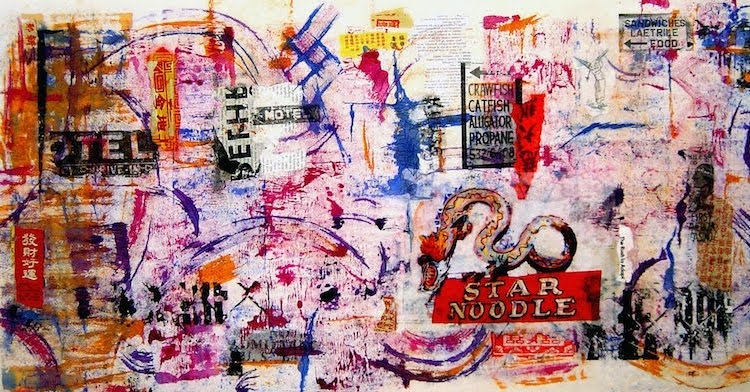
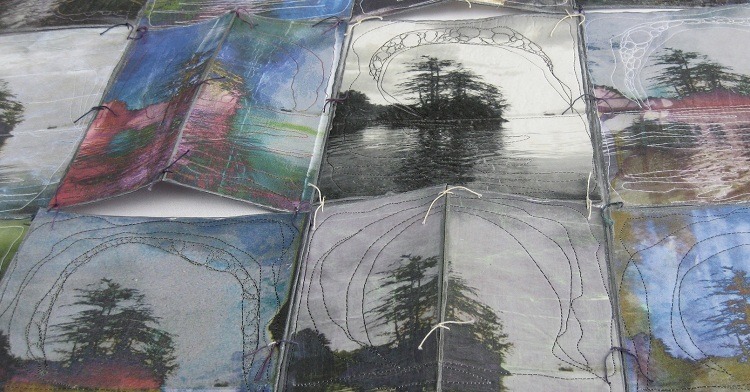
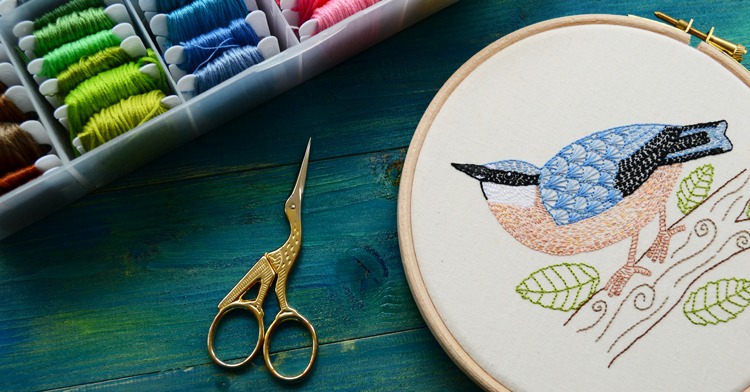
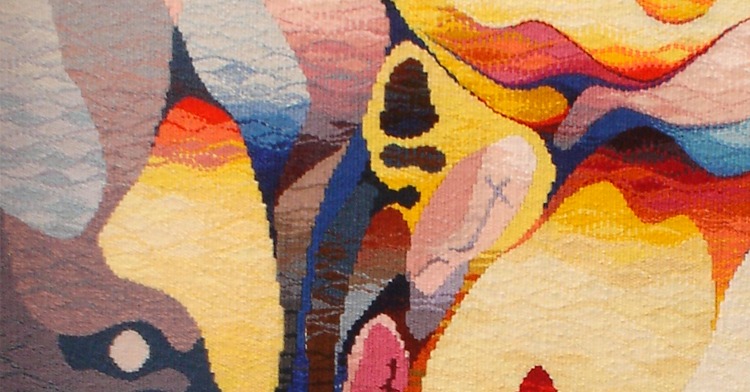
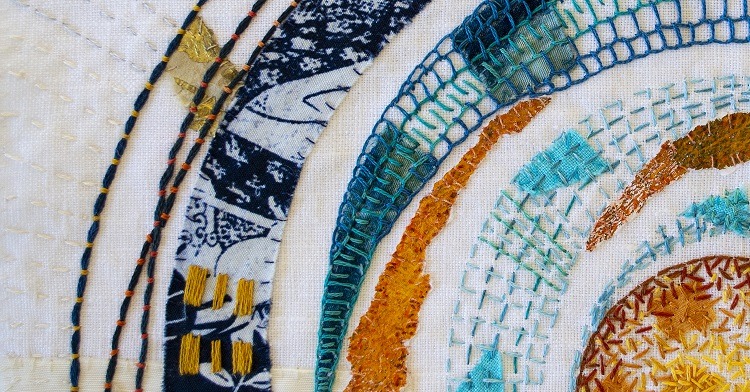
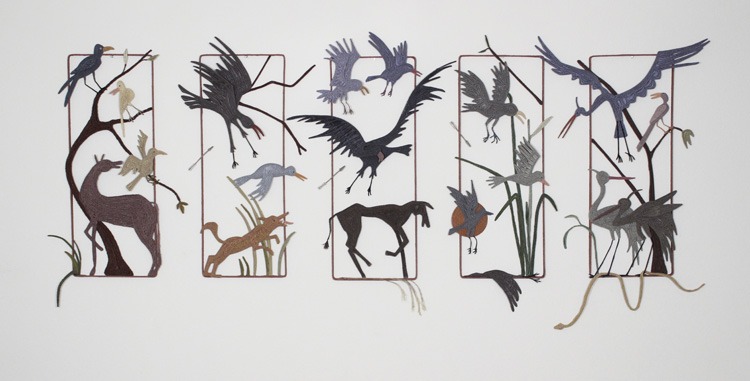
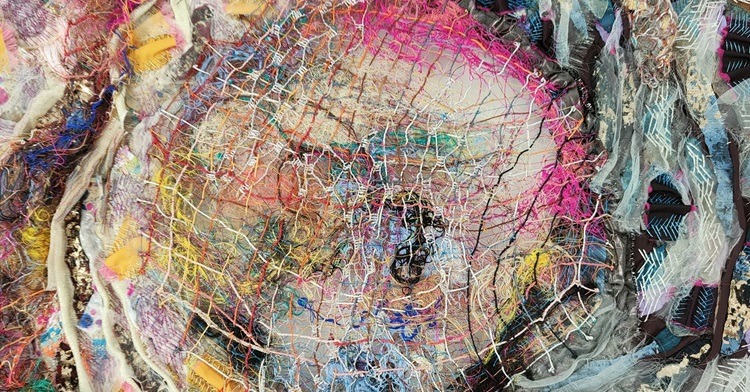
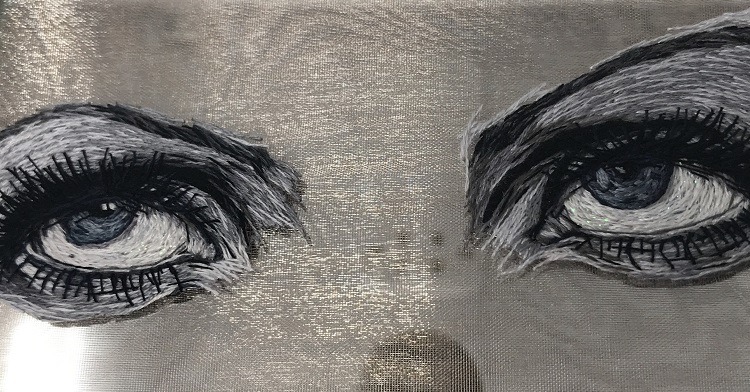
5 comments
Linda Smith
I was feeling down and weary while I was trying to do some freehand embroidery and came across this amazing beautiful and creative site. Thank you so much Louise for this inspiration that has encouraged me to carry on. God bless. Love Linda from South Africa.
Cristina
Precioso trabajo de composición y muy creativo!! Me encanta!
patrica anne
louise,love your work it reminds me of lots of places around where i live.
maria del carmen giner
Me fascinaron tus obras de arte, lamentablemente al no conocer el idioma no puedo leer. Te saludo desde Argentina, mis felicitaciones. Te sigo
Brenda
Love your work….I am working on past meets present…..but very different from yours…but your mixed media is inspiring as I take a coffee break.
Regards
Brenda